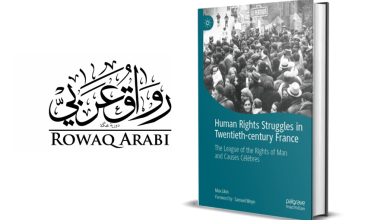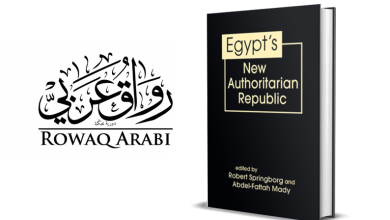Book Review: Revolts and the Military in the Arab Spring

History sheds a light on the ambivalent relationship between the military and civil government. A mere glance at 20th-century events confirms Zoltan Barany’s observation that ‘[…]the military is potentially one of the most consequential institutional actors in postauthoritarian transitions […].’[1]This was no different in 2011, when the military decisively influenced the outcome of the Arab Spring uprisings. Still, the aftermath of the protests varied widely across the region, ranging from a relatively successful democratic transition in Tunisia, to reimposed authoritarianism, effective repression and civil war elsewhere.
In spite of this, literature on political behaviour of armed forces in the 2011 movements remains scant. With Revolts and the Military in the Arab Spring, a book published by I.B. Tauris in 2018, Sean Burns has delivered an important academic contribution. As a visiting assistant professor at the College of William and Mary in Virginia who has five years’ experience of lecturing political science in Qatar, Burns is knowledgeable about the topic. Moreover, the author conveys his knowledge in a thoughtful, balanced and well-structured manner.
In the book’s first chapter, the author provides a basic yet solid theoretical framework for his arguments. Along with an overview of existing literature and the research design, which is made up of a joint method of agreement and difference, this chapter explains the seven key features of military professionalism that are crucial in shaping political behaviour. A professional army should be: largely representative of the national population; have an internally cohesive organisation; be distinctive from other parts of the government; have a bureaucratic structure, indicated by a rule-bound hierarchy; be subordinated to the government; have expertise and remain externally focused on national defence rather than engaging in internal repression or other non-military tasks.
These seven features, Burns argues, are essential to understanding the relationship between the military and the government. In other words, these features shape the armed forces’ decision whether to defend or overthrow the old regime, and – in case of the latter – whether to assume power for themselves or cede it to democratic institutions. The author gives more substantial analyses in the six succeeding chapters that respectively offer a case study of Tunisia, Egypt, Bahrain, Libya, Syria and Yemen.
Like the overall book, these chapters have a clear-cut structure. First, Burns starts every chapter with an elaborate outline of the modern history of these countries, which often spans several centuries. These intermezzos are not superfluous, since historical evolutions help to understand today’s military structures. Second, the author scrutinises the military structures, checking them against the seven aforementioned features. Third, Burns focuses on the 2011 uprisings and the response of the armed forces. In every case he convincingly points out why the military reacted to the 2011 movements the way it did. Lastly, every chapter describes the aftermath of the national uprisings as the logical conclusion of the choices made by the military.
All these chapters offer refreshing insights into the relationship between the armed forces and authoritarian regimes, and how this has affected the events of 2011. For instance, according to the author’s argument, it comes as no surprise that Tunisia is the only country where the Arab Spring actually resulted in a democratic opening. Of all the militaries studied by the book, the Tunisian army was the most professional in terms of the aforementioned qualities. Consequently, the army had few incentives to protect the regime once the Tunisian people took to the streets. Instead, the armed forces ousted President Ben Ali and, with few internal interests to protect, handed over power to a transitional government.
Another strength of the book lies in its meticulous comparisons. As was the case in Tunisia, the Egyptian armed forces had little reason to side with the despotic regime of President Mubarak. Unlike the Tunisian army, however, the Egyptian military had strong internal business interests to protect. The author illustrates how a lack of professionalism led the Egyptian military to act out of self-interest, wresting power back from the democratically elected President Morsi and cracking down on political dissent. Similarly, Burns explains why, contrary to the cases of Tunisia and Egypt, the Bahraini armed forces sided with the regime from the onset. Principally staffed by Sunni foreign recruits, the Bahraini military held little in common with the country’s Shi’a majority. Subordinated to its patron, Bahraini military interests lay with maintaining the status quo.
With the same élan, Burns elucidates why the militaries of Libya, Syria and Yemen were bound to splinter in the face of revolt. Muammar Qaddafi and Hafiz al-Assad, who both rose to prominence through a military coup, deliberately kept their militaries fragmented so that a similar fate would not cut their own rule short. At the same time, close allies held the highest ranks in the armed forces. Hence loyal troops defended the regime, while out-groups defected to the opposition. The Yemeni military, identified by the study as being the least professional, had traditionally been factionalised through the legacy of a weak state and a strong tribal culture. In the end, Burns correctly considers how and why the external variable of foreign intervention came into play in these three countries that remain embroiled in civil war.
While these case studies are compellingly written, perhaps the book’s biggest contribution lies in its final chapter, which covers the Iranian Revolution of 1979, contrasting it with Arab Spring outcomes. In 2011, militaries played a crucial role in either toppling or defending the regime. In 1979, the Shah’s detrimental policies made the Iranian military collapse altogether. Eventually, Khomeini filled the ensuing power void, establishing the Islamic Republic of Iran. Interestingly, Burns goes on to explain how the Ayatollah regime created the current military structure, which is factionalised into a regular army corps and the Islamic Revolutionary Guard Corps, and how, in spite of a limited professionalism, the Iranian military successfully repressed the Green Movement of 2009.
However, a clear and convincing dissertation notwithstanding, some of Burns’ arguments seem to be incomplete. First, the section on Tunisia’s transition remains limited to a keen description of post-2011 political developments, with little attention for the military’s role after its return to the barracks. Burns rightly indicates that military support was necessary for the Jasmine Revolution to succeed. However ‘[t]his is not to say that the army’s backing is sufficient to make a successful revolution […].’[2] The role of the military can hardly be the sole explanation why Tunisia is the only Arab Spring country that remains on the road towards democracy.
Second, the author seems to make an argument in favour of humanitarian intervention, suggesting that ‘it might be good policy to cripple the militaries of authoritarian states that slip into full-scale civil war.’[3] He bases this argument on a comparison between the intensity of the Syrian and Libyan conflicts, which leads to the observation that the higher death toll in the Syrian civil war is largely caused by the regime’s air force and weapon superiority, whilst the NATO intervention in Libya crippled Qaddafi’s military power. However, he barely addresses the possible ramifications of military intervention, ignoring how the current situation in Libya is at least partly due to NATO’s lack of a long-term strategy. Or like Burns admits himself: ‘This is an extreme suggestion and would require a great deal of debate.’[4]
Yet, Revolts and the Military in the Arab Spring remains a recommendable read for anyone with a particular interest in the Arab Spring, or in military structures and politics in general. Indeed, a sound analytical approach, clear language and coherent explanations render the book accessible for a broad audience. What makes the book stand out most is the perspective it offers. As Burns rightfully indicates, his study allows a prudent prediction of military responses to potential uprisings elsewhere in the region. After all, the militaries of Jordan, Lebanon, Iraq, Morocco and Saudi Arabia show similar professional deficiencies as the aforementioned case studies.
Thankfully, this prognosis does not have to be as ill-boding as it seems. In April 2019, the Sudanese military removed President al-Bashir after months of sit-ins. Initially, Sudan risked ending up in an Egypt-like scenario, with the military eager to stay in power whilst the security apparatus of the old regime continued to commit atrocities against the protesters. The closed ranks of civil society, however, induced a negotiated outcome that enabled Sudan to initiate a fragile transition towards democracy. With Revolts and the Military in the Arab Spring, Sean Burns has delivered an important tool in understanding such historical opportunities for democratisation.
[1] Barany, Zoltan (1997) ‘Democratic Consolidation and the Military: The East European Experience’, Comparative Politics 30 (1), pp. 21-43.
[2] Barany, Zoltan (2011) ‘Comparing the Arab Revolts: The Role of the Military’, Journal of Democracy 22 (4), pp. 28-39.
[3] Burns, Sean (2018) Revolts and the Military in the Arab Spring: Popular Uprisings and the Politics of Repression (London: I.B. Tauris) location 5860.
[4] Ibid.
Read this post in: العربية





